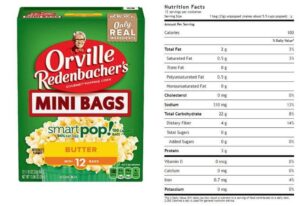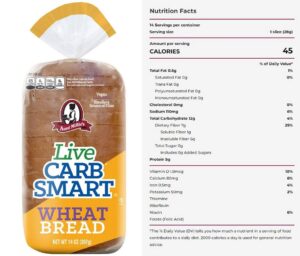6 min read, 1048 words
Understanding Dietary Fats?
For decades, “fat” was considered a bad word in nutrition. People associated dietary fat with weight gain, heart disease, and poor health. However, modern research has revealed that not all fats are bad—in fact, some are essential for good health. Dietary fats are a crucial macronutrient, serving as a primary source of energy and playing vital roles in the body. While excessive intake of certain fats can have negative effects, others contribute to overall well-being and proper bodily functions.
The Many Important Functions of Fats in the Body
✅ Energy Source – All dietary Fats are a concentrated source of energy, providing 9 calories per gram, making them the most energy-dense macronutrient.
✅ Hormone Production – Fats are vital for producing hormones such as estrogen and testosterone. Cholesterol, a type of fat, is a precursor for steroid hormones that regulate metabolism, immune function, and reproductive health.
✅ Cell Construction & Integrity – Dietary Fats are integral components of cell membranes. Phospholipids and cholesterol help maintain cell structure and fluidity, allowing cells to function properly and communicate with one another.
✅ Vitamin Absorption – Fat-soluble vitamins (A, D, E, and K) require fats for absorption. Without adequate dietary fat, these essential nutrients cannot be effectively utilized by the body, potentially leading to deficiencies.
✅ Insulation & Protection – Dietary Fat provides insulation to help regulate body temperature and acts as a cushion to protect vital organs from physical impact.
✅ Brain Function – The brain is nearly 60% fat, and essential fatty acids, particularly omega-3s, are necessary for cognitive function, memory, and mood regulation.
✅ Satiety & Taste – Fats help you feel fuller for longer and enhance the flavor and texture of foods, making meals more satisfying.
Balancing Fats and Other Nutrients in Your Diet
While fats are essential, balance is key. A well-rounded diet should include a mix of healthy fats, protein, and carbohydrates. Overconsumption of unhealthy fats, particularly trans fats and excessive saturated fats, can contribute to health issues, while avoiding fats altogether can lead to nutrient deficiencies. Moderation and variety are crucial in optimizing health.
Saturated vs. Unsaturated Fats
Dietary Fats are broadly classified into saturated and unsaturated fats. The type and source of fat matter more than just the total fat intake.
- Saturated Fats: The carbon atoms are totally covered, or “saturated,” with hydrogen atoms. This structure makes them solid at room temperature.
- Unsaturated Fats: In these fats fewer hydrogen atoms are bound to carbon atoms. This is why they are typically liquid at room temperature.
Saturated Fats
Often found in animal-based foods, saturated fats have been linked to higher total cholesterol and increased LDL (bad) cholesterol when consumed in excess. However, moderate consumption may not be as harmful as once believed.
Common Sources of Saturated Fats:
- Red meat (beef, pork, lamb)
- Full-fat dairy products (cheese, butter, whole milk)
- Coconut oil & palm oil
- Poultry skin
Unsaturated Fats
Considered the healthier fats, unsaturated fats help reduce inflammation and support heart health. Unsaturated Fats fall into two main categories: monounsaturated and polyunsaturated fats.
Monounsaturated Fats (MUFA):
- Olive oil
- Avocados
- Nuts (almonds, cashews, peanuts, pecans, hazelnuts)
- Seeds (pumpkin, sesame)
Polyunsaturated Fats (PUFA):
- Fatty fish (salmon, tuna, sardines)
- Walnuts
- Flaxseeds & chia seeds
- Sunflower & soybean oil
The Two Types of Polyunsaturated Fats
Polyunsaturated fats include two essential fatty acids: omega-3 and omega-6. These fats play vital roles in inflammation regulation, brain function, and heart health.
- Omega-3 Fatty Acids: Found in fatty fish, flaxseeds, and walnuts, these fats help reduce inflammation, support brain function, and promote heart health.
- Omega-6 Fatty Acids: These fats come from vegetable oils (such as sunflower and soybean oil), nuts, and seeds. While essential for health, they should be balanced with omega-3 intake to prevent excessive inflammation.
Types of Omega-3 Fatty Acids
- Eicosapentaenoic Acid (EPA): Found mainly in fish, EPA supports heart health and helps reduce inflammation.
- Docosahexaenoic Acid (DHA): Also found in fish, DHA is crucial for brain development and cognitive function.
- Alpha-Linolenic Acid (ALA): Found in plant sources like flaxseed, vegetable oils, and nuts, ALA is converted into EPA and DHA in small amounts by the body.
You need to obtain essential fatty acids (Omega-3 and Omega-6) from food because your body cannot produce them on its own. To ensure sufficient omega-3 intake, aim to eat fatty fish like salmon, mackerel, and herring at least twice a week. Other excellent sources include flaxseeds, chia seeds, and walnuts.
Omega-6 fatty acids are commonly found in foods such as leafy green vegetables, seeds, nuts, and vegetable oils. While they were once thought to contribute to heart disease, more recent research suggests that they actually play a beneficial role in heart health when consumed in proper balance with omega-3s.
The American Heart Association recommends that 5% to 10% of daily calories come from omega-6 fatty acids. Most people already meet this requirement through their regular diet. However, maintaining a healthy ratio between omega-3 and omega-6 intake is key to reducing inflammation and supporting overall well-being.
Trans Fats: The Dangerous Fats
Trans fats are considered the worst type of dietary fat due to their harmful effects on cholesterol levels and heart health. There are two types:
✅ Naturally Occurring Trans Fats – Found in small amounts in dairy and meat products from ruminant animals (cows, sheep, goats). These are not as harmful as their artificial counterparts.
🚨 Artificial (Man-Made) Trans Fats – Created through hydrogenation, a process that turns liquid oils into solid fats to extend shelf life. These fats are linked to increased heart disease risk.
Common Sources of Artificial Trans Fats:
- Fried fast foods
- Packaged baked goods (cookies, cakes, pastries)
- Margarine & shortening
- Processed snack foods
Many countries have banned or restricted the use of artificial trans fats due to their harmful health effects.
Closing Thoughts
Dietary fats are not the enemy—they are a crucial part of a balanced diet. The key is to choose healthy sources of fats, limit unhealthy trans fats, and consume saturated fats in moderation. By focusing on whole, nutrient-dense foods, you can ensure that your diet supports overall health while enjoying the benefits that healthy fats provide.
– Coach Ken 🚀







